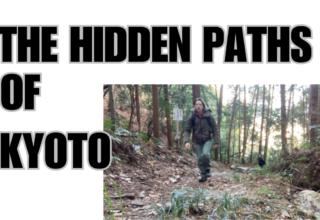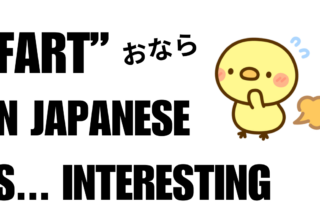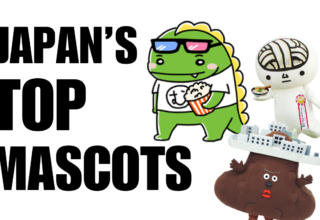
On this episode of Ichimon Japan we ask: Why did samurai have such weird haircuts?
Topics Discussed
- What a chonmage is
- The Japanese people’s pursuit of excellence of the hairstyle
- The historical origins of the topknots in Japan
- Hats and their connection to the topknot
- The supposed reason why samurai started using topknots and shaving the front of their heads
- The chonmage as a status symbol during the Edo Period
- The most well-known types of chonmage
- What an ichōmage is
- What a hondamage is
- What the sōhatsu style topknot looked like
- What a chasenmage/chasengami is
- The supposed etymology of the term chonmage
- An article stating that some men would pluck their hair and cause themselves to bleed
- A theory about chonmage as a way to hide baldness
- The Sanpatsudattōurei (散髪脱刀令) declaration of 1871
- The Meiji government’s efforts to have men cut off their topknots and stop carrying swords
- How Iwakura Tomomi cut his hair in Chicago
- What a zangiriatama is
- The chonmage in modern times in Japan
- The use of chonmage by sumo wrestlers
- About tokoyama (床山), the hairstylists of sumo wrestlers
- How two top ranked tokoyama became tokoyama
- How much money a tokoyama might earn
- Topknots in modern day kabuki
- Whether there are any people in modern day Japan outside of sumo that wear their hair in the chonmage (topknot) style
- The TV personality Magehira
- The time consuming process it takes to get your hair in a proper chonmage
- What a danpatsushiki (散髪式) is (sumo hair cutting ceremony)
- Kisenosato’s danpatsushiki
- And much more!
Listen to Ichimon Japan on
Apple Podcasts Google Podcasts Stitcher Spotify iHeartRadio PodBean Tunein RSS
Support on Patreon
If you enjoy Ichimon Japan and want to ensure that we’re able to produce more episodes, then please consider becoming a patron on Patreon.com. You can join for just $1 a month and that comes with perks like early access to episodes, a shout-out at the beginning of a future episode, bonus content, and discounts to Kimito Designs. For $3 a month you get all that plus access to Japanese Plus Alpha, a podcast produced by me (Tony Vega) that focuses on the Japanese language and its many quirks. Whether you are studying Japanese or just enjoy learning about language and linguistics, you’ll enjoy Japanese Plus Alpha.
And it goes without saying that if you sign up, you’ll also get my undying gratitude. Thanks in advance!
Sources, Links, Videos, Etc.
Here are some of the English-language sources used for this article.
- Which One is the Most Handsome!? Four Chonmage to Choose
- This article has some very useful illustrations of the four types of topknots that were discussed in this episode. This is also the article that features the “excellence of the hairstyle” quote.
- How to tie Chonmage (Samurai Top Knot・Samurai hair)
- This is a Japanese video but there is no spoken dialog.
- Sumo 101: Tokoyama (Hairdressers)
- The Sumo Top Knot Is the Original Man Bun
Here are some of the main Japanese-language sources used for this episode.
- 時代劇でお馴染み”ちょんまげ”。なぜこのような変わった髪形文化が日本に定着してたのでしょうか?
- 冠と烏帽子
- 衣服から見る日本
- 【 どのちょんまげが好き? 】男っぷりをあげる!江戸の人気ヘアコレクション
- 江戸時代の髪型にはどのような特徴があったのでしょうか
- 丁髷 (Japanese Wikipedia)
- 【戦国小BANASHI】なぜ?江戸時代に大流行!「ちょんまげ」が誕生した理由は!?【髪型の歴史】
- ちょんまげは何故あの髪型?イケてるメンズの髪型文化
- 江戸時代とかは全国の農民の男性がちょんまげをしてたのですか?どのくらいの農民の男性がちょんまげをしてたのですか?ちょんまげ以外の男性の髪型はありましたか?
- 装束の持ち具
- 床山さんの仕事 2019年8月5日放送 「ハッキヨイ、ノコッタ!」/髙岡美樹のべっぴんラジオ
- 相撲の床山の仕事や給料、年収について。なり方も解説!
- 江戸時代の侍でハゲの侍はチョンマゲはどうしてましたか?
- ちょんまげほハゲを隠すために考えられた髪型ですか?
The video below focuses on the hats worn by men in Japan (eboshi and kanmuri) throughout much of the 1000 years or so prior to the Edo Period and their connection to the topknot hair style. This is the video which states that it used to be that walking around outside without a hat on in Japan was like walking around outside without pants on today.
Here is a video showing tokyamas (hairdessers for sumo wrestlers) and tokoyamas in training during an educational conference.
Here is the video that was mentioned in this episode of a tokoyama doing a live demonstration of how he prepares a sumo wrestler’s hair.
Here is the video of Kisenosato’s danpatsushiki (topknot cutting ceremony conducted when a sumo wrestler retires).
The video below shows how a kabuki actor would put on a fake chonmage.
Here is the video of the Japanese TV personality Magehira talking to other Japanese guys who also have topknots.
In the video below Magehira meets someone in Tokyo near Sensoji Temple who also has his hair in a chonmage.
Here’s a video of a retired sumo wrestler showing the process he goes through to put his hair into a chonmage by himself.
The video below is a segment from a Japanese TV show. In this recurring segment men volunteer to have a professional give them a chonmage.
Here’s a video about Tatsuo Hisae, a taxi driver in Kyoto who wears his hair in a chonmage/topknot.
Here’s a fun children’s song about chonmage.
To listen to the latest episode of Japan Station check out the link below.
If you’re interested in getting the t-shirt inspired by this episode, then make sure to go to KimitoDesigns.com.
Japanese Vocabulary List
Most episodes feature at least one or two interesting Japanese words or phrases. Here’s some of the ones that came up on this episode. All information is from Jim Breen’s WWWJDIC.
- Mage
- 髷 【まげ】 (n) bun (hairstyle); chignon; topknot
- Chonmage
- 丁髷 【ちょんまげ】 (n) (uk) topknot (hair style)
We Want Your Questions
Is there something about Japan that confuses you? Is there something about Japanese culture that you would like to learn more about? Is there something in Japanese history that you would like us to explain? We’re always looking for new questions about Japan to answer, so if you have one, please send it to ichimon@japankyo.com.
Special Thanks
Opening/Closing Theme: Produced by Apol (YouTube, Twitter, Facebook, Fiverr)
Ichimon Japan cover art: Produced by Erik R.
Episode artwork by @pradipta19.
Follow Japankyo on Social Media
Full Show Notes
What are you funniest Japanese mistakes? | Ichimon Japan 30















